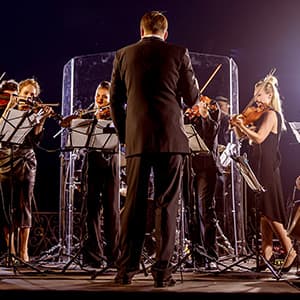

Dvoraks Ninth Symphony Tickets
Up to 30% Off Compared to Competitors.
Location: Select Location (e.g, New York)
Events Nearby
We're Sorry. There are currently no events near you.
About Dvorak's Ninth Symphony
In recent events, Dvořák's Ninth Symphony continues to be a highlight in concert programming worldwide, with numerous orchestras featuring it in their seasonal line-ups. For instance, major symphony orchestras such as the New York Philharmonic and the London Symphony Orchestra have scheduled performances of the 'New World Symphony' as part of their current concert series. Additionally, many orchestras are incorporating innovative interpretations of the piece, collaborating with contemporary artists and exploring diverse arrangements to engage new audiences. The symphony was also featured prominently in a series of summer music festivals, where it was performed in outdoor settings, allowing for a broader audience reach. In the wake of the pandemic, orchestras have embraced digital platforms, leading to virtual concerts that include Dvořák's Ninth, thus adapting to the changing landscape of live performances. The symphony's themes of hope and resilience resonate strongly in today's world, making it a poignant choice for many ensembles seeking to uplift and inspire their listeners. As we move forward, Dvořák's Ninth Symphony remains not just a beloved classical masterpiece but also a symbol of cultural unity and artistic expression in live concert events.
Dvorak's Ninth Symphony History
Antonín Dvořák's Ninth Symphony, also known as the 'New World Symphony', was composed between 1892 and 1893 during his time in the United States. It premiered on December 16, 1893, at Carnegie Hall in New York City, conducted by the composer himself. The symphony is notable for its incorporation of American musical elements, which Dvořák was inspired to include after observing the rich cultural tapestry of African American spirituals and Native American music. Dvořák's Ninth Symphony is structured in four movements, each showcasing various influences and innovative orchestration that highlight his unique compositional voice. The first movement introduces a sense of grandeur and optimism, while the second movement, 'Largo', features the famous English horn solo that evokes a deeply reflective mood, often linked to the themes of longing and nostalgia. The symphony's popularity soared after its premiere, establishing Dvořák as a major figure in the classical music world and cementing the piece as a staple in the orchestral repertoire. Over the decades, it has been performed extensively around the globe, resonating with audiences for its emotional depth and vibrant themes.
